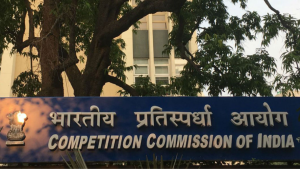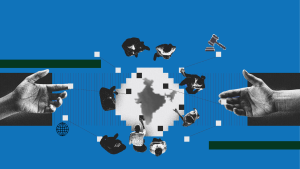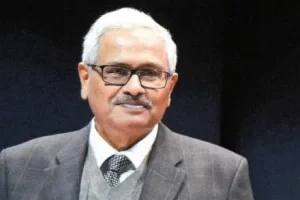

Hon’ble Justice R.V. Raveendran (Retd., Supreme Court of India) on the Impact of Judicial Delays
I take great pleasure on releasing Justice Frustrated: The Systemic Impact of Delays in Indian Courts, the third in the series of Rule of Law Project, edited by Shruthi Vidyasagar, Shruthi Naik, and Harish Narasappa.
The third book in the Rule of Law Project, which I had the pleasure of releasing just now, is a collection of thought provoking articles about delays in justice delivery and its effects and some solutions regarding delay. being released. When I glanced through the book, two things stuck in my mind. The first was Harish [Narasappa] comparing the position of litigants in India to that of Trishanku – a very , apt comparison, having regard to anyone who happens to be a litigant in India. The second is the well-known saying in Kannada with which [S.S.] Naganand starts his article – geddavanu sota, sotavanu satta. That is, a winning litigant is really a loser litigant, and a losing litigant is already a dead. These two descriptions – one given by Harish and the other by Naganand – very aptly capture the position of litigants in view of the delays in justice delivery.
Let me give you some statistics which I have gathered from the book just now released and other sources. The Indian judiciary presently has a sanctioned strength of 35 Supreme Court judges, 1,080 High Court judges, and 22,700 subordinate judges for a population of over 1.3 billion. This provides a judge-to-population ratio of 18 judges per million. If we compare it with that of developed countries where the ratio is 50 to 110 judges per million, we have only a small judge strength of 18 per million. As the sanctioned strength is seldom reached, the judiciary normally operates with a working strength of around 75%, which means that we really have a ratio of 12 to 13 judges per million. The total number of cases that are pending in Indian courts is 33 million – 29 million in the trial courts, 4 million in the State High Courts and 60,000 cases before the Supreme Court. As the operating strength of the judges is only around 17,000, the average case load per judge is 1,800 to 2,000 which is a very high.
At present, out of the 29 million cases pending in the trial courts, only 8.5 million cases are civil cases and remaining 20.5 million cases are criminal cases. Now, 80% of the civil cases go to trial and hardly 20% of the cases get settled at the pre-trial stage. In comparison, in the United States, where in spite of the judge population being five-to-six times more than that of India, hardly 10% of cases go to trial, and 90% of cases get settled at pre-trial stage. In so far as criminal cases are concerned, there is no question of settlements and everything goes to trial, unless they get compounded (which is only in some limited category of cases and to a very limited extent). Pre-bargaining, which was introduced in the hope that it will reduce pendency and benefit the society, is also a non-starter. Result is that most cases are tried in court which means delay, and that too long delay.
Most cases, civil or criminal, take an average of anywhere between four and five years for disposal. Now, in some states and in some category of cases, the total period of pendency can be as long as two decades for a civil case and one decade for criminal cases. In some states like Uttar Pradesh, Maharashtra, and Bihar, where because of the huge backlog, a criminal may appeal take 20 years and a civil appeal may take 10 to 15 years for being heard and decided. The overloaded judicial system has to struggle with huge pendency, insufficient manpower, and elaborate procedural laws. A powerful bar and a conservative judiciary have developed a mindset tuned to think of cases in life cycles of years and decades instead of days and months. Negotiated settlements and adoption of alternative dispute resolution processes are not given the push and encouragement which they deserve. The response of the executive to the demands for more judges, more courts, and better infrastructure, has been lukewarm. The response of the legislature to the demand for better laws has been sluggish. The response of the judiciary for demands for better processes of selection of judges, and their training has been unsatisfactory. All this has created delay, resulting in frustration and discontent.
In commercial litigation, delay destroys businesses. In family disputes, delay destroys peace, harmony, and health, turning litigants into nervous wrecks. In most criminal cases, the harassment, the humiliation, or trauma undergone by an accused during the long-drawn prosecution is many a time more than the ultimate punishment that is handed out to him. This means that, particularly in respect of those accused who are ultimately acquitted as not being guilty, who constitute more than 50% of those prosecuted, are subjected to torturous, long-drawn criminal prosecutions. Irrespective of whether the accused suffers a punishment or not, the complainants also suffer punishment because they are also not spared the harassment, frustration, humiliation, and trauma during the long-drawn judicial process in criminal cases.
The delays – when considered with other factors associated with litigation –the inflexibility in decisions, technicalities in laws and high cost of litigation, make litigants feel that justice has become elusive and illusive. Consequently, the confidence in the justice delivery system and rule of law is getting steadily eroded. As a result, people with grievances, causes, complaints, start thinking of solutions outside the legal framework. Incidents of landlords engaging the services of musclemen to evict tenants is quite common. Incidents of creditors and financial institutions engaging dubious collection agencies for recovery by applying force is alarmingly increasing. There are more and more incidents of powerful politicians, unscrupulous police officers and members of the underworld acting as brutal mediators settling property disputes, and in that process grabbing properties or large chunks thereof for themselves. This state of things cannot continue and should not be permitted to continue. But, though well aware that these extra-judicial recourses are illegal and risky, more and more persons are tempted to believe that this is the only way to get swift, decisive, and effective results. In this process, law-abiding citizens are becoming a society of law breakers. This is the most dangerous side effect of delay.
The injustice caused, both to complainants as well as victims, as also the persons accused of crimes, on account of delay in deciding criminal cases is mindboggling. When there is delay, witnesses forget. Witnesses die. Witnesses are bought. Witnesses turn hostile and the evidence disappears. The investigating officers are transferred, retire, or become unavailable. The victims and their families are threatened or persuaded to give up, and face ruination. The public forget and forgive. The prosecutors and judges get tired and exhausted. The result is that India has one of the highest rates of acquittals. The high rate of acquittals demoralizes the victims, demoralizes the police, and demoralizes law-abiding citizens. At the same time, offenders are emboldened to continue their life of crime. Rule of law becomes a mockery. The position is no better on the other side. Not all accused are guilty. Please remember, in India, a lot of innocents are prosecuted. It is common for persons being accused of crime on the basis of slipshod investigations, false accusations, and framing due to political or local rivalry and family vendetta. Though a person accused of a crime is deemed innocent till proven guilty in a court of law, being arrested or being charged with an offence takes away his freedom and livelihood. Apart from destroying his reputation, his family members are shunned, becoming outcasts overnight.
At any given point of time, there are three lakh persons under trial – that is persons who are held in custody, awaiting trial – locked up in prisons, making up about two-thirds of the prison population. More than 3,000 undertrials are rotting in jails for more than five years. There are nearly 2,000 children behind bars as their mothers are undertrial prisoners. At least 50% of these under-trials in prisons will ultimately be acquitted on trial. When an undertrial, who is behind bars for several years, is ultimately acquitted, he or she has no remedy for the loss of precious years of life, freedom, and reputation lost by him or her. Similar is the position of those who are convicted of crimes and languishing in jail during the pendency of appeals and who may ultimately be acquitted.
I am mentioning all these to say how delay is destroying the very structure of the democratic society. The impact of delay on the society, on the litigant and the economy & commerce – particularly foreign investment, has been discussed. What is not discussed is the effect of impact of delay on the victims of crimes. This is unfortunate. Because when do they get justice? And what about the totally ignored group of those who are wrongly accused of crime? A person may be falsely accused of a crime – that is, cases where crime has been committed, but the person accused is not really the offender; or a person is accused of a crime that was never committed, that is, an imaginary or cooked up crime.
Many do not realize the impact of delay on the credibility of judiciary as an institution. I gave the example of how people are going away from courts for getting the relief, which is very, very dangerous. Once the credibility of the judiciary is affected, rule of law is itself affected.
Many do not consider the impact of delay on the members of the judiciary. When a judge has 300 to 500 cases, he feels, ‘let me deal with each case and do justice.’ But if a judge has 2,000 cases, it becomes oppressive. When it is oppressive, a judge starts thinking of ‘disposing’ of cases rather than doing justice. There lies the danger – a judge starts thinking of cases as statistics rather than as human problems requiring solutions and remedies. The oppressive numbers are making judges and the higher judiciary to always think of disposals, rather than justice which is very serious.
I want to point out that when one talks of delay, everyone, that is, the courts, the lawyers, and even the authors in this book – is considering the period during which a case is pending. That is, if a suit is filed today and is decreed after five years, the said five year period is considered to say whether there is delay or not. But what should be considered is something different. Please remember that when we are talking of justice, we should be considering the time taken for a party to get justice and not the period taken for getting a paper decree. How long does it really take the civil litigant to get relief is the question. The question is not how long it takes to get a paper decree in the suit. He may obtain a paper decree in five years and may succeed in an appeal filed by the other side in another five years. Does it mean that the delay is ten years? Certainly not. The delay should be counted upto the date of the party getting actual relief and not the date of getting a decree. What is the use of getting a decree if he is not able to execute it within a reasonable time and get relief. There are many who get decree, but fail to realise the benefits of the decree due to delays in execution. In fact, I remember the quotation from Soonavala’s book on Law of Execution that the real problems of a plaintiff start, not when he files a suit, but when he gets a decree. Therefore, when we talk of delay, we should consider the delay, not disposal of the case, but delay in getting actual relief, which really is justice as far as the party is concerned. A civil litigant gets justice when he gets the relief, not when he gets a decree. Criminal justice happens when the guilty is punished and actually starts undergoing the punishment. Therefore, when you consider the impact of delay in justice, the delay you should consider is the delay in actually getting the relief, and not when a paper decree is obtained.
There is a well-known saying that if you want a good and sound solution, you should first identify and understand the problem. This book identifies the problem and gives the dimensions of the problem. It also gives some solutions. It is now for the stakeholders to now take up the matter and give speedy and effective justice to the litigant public in this country. I am sure that this book with its companion volumes, as also the volumes to be published in future, will help the judiciary become the pillar of rule of law, which it is supposed to be. Thank you for this opportunity to share a few thoughts.
The views expressed in this article are solely those of the author’s and they do not represent the views of DAKSH.
RECENT ARTICLES


Testing the Waters: Pre-Implementation Evaluation of the 2024 CCI Combination Regulations

Not Quite Rocket Science

Administration of justice needs an Aspirational Gatishakti

-
Rule of Law ProjectRule of Law Project
-
Access to Justice SurveyAccess to Justice Survey
-
BlogBlog
-
Contact UsContact Us
-
Statistics and ReportsStatistics and Reports
© 2021 DAKSH India. All rights reserved
Powered by Oy Media Solutions
Designed by GGWP Design
